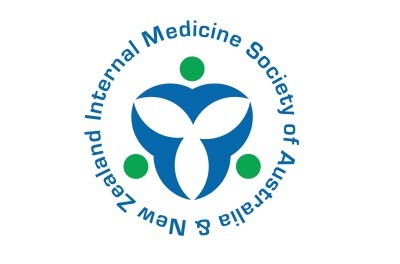Internal Medicine Society of Australia and New Zealand
Recommendations from the Internal Medicine Society of Australia and New Zealand on avoiding medication-related harm, monitoring antibiotic treatment, fainting and CT pulmonary angiography. IMSANZ represents over 700 Consultant Physicians and trainees in Internal Medicine (also known as General Medicine or General and Acute Care Medicine) within Australia and New Zealand. The Society provides a mechanism for developing the academic and professional profile of general medicine and seeks to advocate for, and sponsor the educational training, research and workforce requirements of general internal medicine.

3.
Once patients have become afebrile (non-feverish) and are clinically improving, don’t continue prescribing intravenous antibiotics to those with uncomplicated infections and no high-risk features if they are tolerant of oral antibiotics.
Patients with uncomplicated infections not requiring prolonged antibiotic therapy and with no high-risk features should be switched from intravenous (IV) to oral antibiotics once they are afebrile, clinically improving and able to tolerate oral medication. In hospital, this often occurs by day three. Exceptions to this rule are those suffering life threatening or deep-seated infections (such as suspected endocarditis, osteomyelitis or meningitis), and high risk patients (such as immunocompromised patients including from HIV, intravenous drug use, underlying advanced cancer, or documented multi-resistant bacteraemia or hospital-acquired infection).
There is no evidence to support the belief that oral medications are insufficiently bioavailable to be as effective as IV medications, or that the same agent must be used both IV and orally.The scope for early IV-to-oral conversion has broadened, owing to the advent of newer, more potent oral agents that achieve higher and more consistent serum and tissue concentration. Moreover, earlier switchover from IV-to-oral therapy reduces the risk of cannula-related infections, carries no risk of thrombophlebitis, and allows for earlier discharge and reduced cost.
Supporting evidence
- Aboltins CA, Hutchinson AF, Sinnappu RN, et al. Oral versus parenteral antimicrobials for the treatment of cellulitis: a randomized non-inferiority trial. J Antimicrob Chemother 2015; 70(2):581-6.
- Athanassa Z, Makris G, Dimopoulos G, et al. Early switch to oral treatment in patients with moderate to severe community-acquired pneumonia: a meta-analysis. Drugs 2008; 68(17):2469-81.
- Béïque L, Zvonar R. Addressing concerns about changing the route of antimicrobial administration from intravenous to oral in adult inpatients. Can J Hosp Pharm 2015; 68(4):318-26
- Cyriac JM, James E. Switch over from intravenous to oral therapy: A concise overview. J Pharmacol Pharmacother 2014; 5(2):83-7.
- Solomkin JS, Mazuski JE, Bradley JS, et al. Diagnosis and management of complicated intra-abdominal infection in adults and children: guidelines by the Surgical Infection Society and the Infectious Diseases Society of America. Clin Infect Dis 2010; 50(2):133-64.
- Solomkin JS, Reinhart HH, Dellinger EP, et al. Results of a randomized trial comparing sequential intravenous/oral treatment with ciprofloxacin plus metronidazole to imipenem/cilastatin for intra-abdominal infections. The Intra-Abdominal Infection Study Group. Ann Surg 1996; 223(3):303-15.
A panel of IMSANZ members produced an initial list of 32 low value tests, treatments and management decisions frequently encountered in general medicine services. This initial list was distributed via e-mail to 350 members of a working group comprising approximately 50 general physicians as well as nurses and allied health professionals who ranked the items in terms of priority and were free to nominate additional items. Based on their responses, the list was condensed to 15 items including three which were not previously listed. These 15 items were the subject of a face-to-face forum of the working group which reached consensus on a final list of 10.
Recommendations on ‘what not to do’ were formulated around these 10 items and a summary of the evidence for each recommendation was prepared. An online survey based on this work was presented to, and approved by, IMSANZ Council. The survey was sent to all IMSANZ members asking respondents to assign a score from 1 to 5 for each recommendation on three criteria: ‘The clinical practice being targeted by this recommendation is still being undertaken in significant numbers’; ‘This recommendation is evidence-based’; and ‘This recommendation is important in terms of reducing harm to patients and/or costs to the healthcare system’. The survey attracted 182 respondents from all across Australia and New Zealand, which was a response rate of 26%. The final top five chosen were the recommendations with the five highest average total scores assigned to them.
Related recommendations
- 1 Avoid medication-related harm in older patients (>65 years) receiving 5 or more regularly used medicines by performing a complete medication review and deprescribing whenever appropriate.
- 2 Don’t request daily full blood counts, erythrocyte sedimentation rate (ESR) or C-reactive protein (CRP) as measures of response to antibiotic treatment if patients are clinically improving.
- 3 Once patients have become afebrile (non-feverish) and are clinically improving, don’t continue prescribing intravenous antibiotics to those with uncomplicated infections and no high-risk features if they are tolerant of oral antibiotics.
- 4 Don’t request Holter monitoring, carotid duplex scans, echocardiography, electroencephalograms (EEGs) or telemetry in patients with first presentation of uncomplicated syncope and no high risk features.
-
5
Don’t request computerised tomography pulmonary angiography (CTPA) as first-choice investigation in non-pregnant adult patients with low risk of pulmonary thromboembolism (PTE) by Wells’ score (score <= 4); imaging can be avoided in low risk patients if D-dimer test is negative after adjusting for age